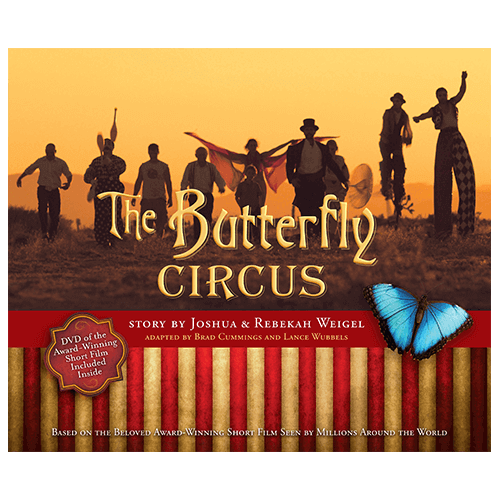Seven Ways I Am Trying To Heal Political Division
This page has affiliate links in it for your convenience. I may earn a small commission at no cost to you when you use one of these links. When you use these links, it helps support the mission of Raise The Good. Thank you! For more information, click here.
One of my brothers is on the opposite end of the political spectrum from me. We drive each other crazy sometimes! Sadly, it got to the point that we didn’t talk, because I wanted to avoid arguing with him. I felt badly about it, but every time we talked, I would get really ticked- so I just ended up avoiding him. After a while, he ended up calling me on the carpet about it, and I admitted that I didn’t know what to talk about, since I didn’t want to get into current events with him. Sadly, I’ve seen this political division play out in a lot of families and friendships.

A divided nation comes from divided individuals. When we don’t talk, we can’t understand each other. When we don’t understand each other, emotions rise higher, differences grow larger, and we can’t find solutions that work for both sides. Eventually, things get worse and worse until they get to a point of no return.
Here are seven things I am committing to do in order to heal political division, improve my relationships, teach my children how to handle difficult topics, and become the change in the world that I want to see. (I’d love to hear what you are doing on this front as well!) We won’t always agree, and that’s ok. But deliberately trying to do these actions will help me be a better person, understand the issues better, and improve my relationships.
What I am doing to Heal Political Division:
1. Commit to spending time
This might be the hardest part. Taking time to read and digest a lot of books, watch two hour news conferences, research primary sources, and have difficult conversations, can be tricky when the rest of life still needs you to work, take care of the kids, clean the house, etc. But without this step, we can’t make any progress.
2. Try to Take A Historian’s Perspective
I received my bachelor’s degree in history. One thing I learned is to view everything in a neutral way–without a horse in the race. (I never cared which war lord ended up governing certain parts of China in the 1800s, for example.) Our challenge is to look at our own history, and also today’s events in the same way. Let’s look at what works and what doesn’t, and what the consequences of certain actions, laws, etc. are– without caring which side comes off looking better.
Here are some questions I like to ask, or things I try to remember as I look at hot button topics from history and recent events:
- What effects did this policy have? Did it do what it intended? What were the unintended consequences?
- What do the numbers say? Are there other ways to interpret them? Who collected the numbers and are they trustworthy? What conflicting variables could have affected them? What other numbers should I look at?
- Two things can be true at the same time.
- People are rarely all good or all bad. What good and bad did XYZ leader do? What shaped their decisions? Did other influences affect their popularity (or lack thereof)?
- Look at nuance. Most issues are multi-faceted and there is rarely one cut and dried answer. Examine a situation or leader from a variety of perspectives: domestic, international, social, legal, economic, sustainability, etc.
- Look at ALL information, not just the information that I think I will agree with.
3. Seek First to Understand, then to be Understood
(Or in other words, research and learn about the opposite point of view.)
This is the 5th Habit from Stephen Covey’s 7 Habits of Highly Successful People. It’s SUCH a valuable principle for marriages, parenting, work or politics. I am really trying to listen to other points of view, to read new books, to ask curious and genuine questions to people who think differently than I do. Most people aren’t evil or stupid. My job is to figure out why they think the way that they do.
Some things I am doing:
- Read/ watch opposing viewpoints. For example, reading Black authors Thomas Sowell and Ibram X. Kendi (they have completely different messages). Also watching movies such as Uncle Tom and 13th.
- Pick my brother’s brain. Take one topic at a time and try to understand (without feeling defensive or needing to push my viewpoint) why he thinks the way he does. Most of all, listen.
- Be curious. I am here to learn, not defend my position or get other people to adopt it.
- Have people of opposing viewpoints on my social media feeds- even if they drive me crazy. I need to figure out why they put time and resources into what they believe. It also shakes up the algorithms, so I am not in my own echo chamber as much.
- Humanize those I disagree with. I know a lovely German woman named Helga, whose father was forcefully taken to fight in the German army in World War II, when she was a young teen. She never heard from him again. She and her mother eventually became refugees, fled the incoming Russian army, and experienced unimaginable things. Her advice to me after watching Hitler’s rise, fleeing an army, and trying to integrate into the U.S. (as a German!) after a world war? “Never label anyone your enemy. That is a powerful word that only does damage.”
We all know that labeling ethnic or racial groups of people is harmful and dehumanizing. It is totally wrong. I feel that name-calling or mocking political groups and/or individuals is also dehumanizing and wrong. Instead, my goal is to find out who the people I disagree with, love. That humanizes them FAST. Is this person a parent? Whose child are they? Do they volunteer? Look for the good in them. When we see only the bad, we are not seeing the entire truth.
- Talk to people directly involved. My roommate Lisa was an amazing sounding board for me when I had questions during the BLM protests.
4. Use original sources/ well sourced Information
Oh, boy. This is an important one. Because the Fairness Doctrine was discontinued by the FCC, and an effort to turn it into law was vetoed in 1987, news organizations no longer need to share both sides of an issue in an impartial way the way that they used to. It has always been important to use original sources, but these days, it is VITAL.
For example, racism and social justice are influencing a lot of public dialogue right now. Do we know what the founding fathers thought about slavery? We have seen snippets, memes and headlines, but what did they really believe over their lifetime? What did they say, and what did they do? What were the laws of the time? (I just recently found out that it was illegal in certain states to free your slaves–even if you wanted to!) What did Martin Luther King, Jr. and others who led the civil rights movement believe? Let’s ask the same questions about them. What do modern civil rights leaders or organizations believe? What has shaped their current efforts?
“Bullet point history” (where you know a few bullet points or facts about a person) is not enough. We need to research the issues deeply and from several different sources to make sure we know what the facts are. Social media posts about the founding fathers, and short quotes from Martin Luther King, Jr. are not enough. We need to go to the beginning to get real facts and lots of them.
How To Find Good Sources:
Original writings (like letters, speeches, official documents, laws, and personal papers), or biographies and other books that have original writings as their primary source material, with little commentary, are the best types of sources. Be sure to check the bibliography of biographies and other books to see how creditable their sources are! I love to read anything by David McCullough, Ron Chernow, Doris Kearns Goodwin. I’m on the hunt for more well-sourced authors, so please share your favorites!
One Example:
Here is a recent example of how original sources helped me: When the Jacob Blake shooting happened, I was horrified along with the rest of the country. The viral video of Jacob, an unarmed Black man, being shot seven times in the back as his children watched, was damning.
Then I watched the news conference where the Kenosha County DA announced the decision to not charge the police officer involved– and why. He shared all of the evidence he had. (It was a LONG presentation!) They brought in an independent “use of force” expert, who is a former police chief, person of color, and someone who is trying to reform police departments. This man verified the facts of the case and made a recommendation to not charge the officers.
As I listened to this press conference, I learned that there was a lot of information that the viral video did not share. There is no question that the shooting was a tragedy for everyone involved. Others might have made different decisions than the DA did. But listening to credible sources that shared the facts made a difference in how I perceived the situation.

5. Wait two weeks after a major event to get more complete information
My husband was the one who taught me this tip. It is so easy to be outraged at a situation or be in denial about it when a news story breaks. However, complete information is rarely available at the beginning of a breaking news story.
I saw several theories floating around the internet when we first heard of the riot at the Capitol building. After a few days, some theories were verified and others were discredited. We learned more: who was involved (and who wasn’t), their affiliations, background, etc., in the days after the attack. The same thing happened with the death of George Floyd. More information came out days or even weeks after his death. The more information we have, the better. Then we won’t say things we will later regret, harm relationships, or end up looking foolish when new information becomes available.
6. Search for, and share helpful, non-partisan resources (or at least read different perspectives)
Social media is not where I should be getting my news…but it’s so convenient and right there in front of me! Sadly, with algorithms and well-intentioned, but passionate friends who share news sources, the articles that show up on my feed might not be completely accurate or tell the full story.
Every news organization has a bias- even you and I have a bias! Bias is how facts are interpreted. Sharon McMahon (“America’s government teacher”) from @SharonSaysSo on Instagram does a REALLY great job of explaining bias. (She also conducts government classes for adults!) I highly recommend going to her highlights and looking at her “Bias” section. Until we understand that, we will have a hard time discerning what the news is or isn’t telling us. She recommends reading several different news sources, and I agree with her. (Below is a chart from Allsides.com that shows you where each major media outlet lies- I found it very helpful!).

I really like AllSides.com, because they show you what the right, left and middle are all saying about an event or topic. The Flip Side is also a great resource to see both sides at the same time. I have also really enjoyed SmartHerNews.com– a professional journalist who is passionate about providing facts and not commentary.
7. Gut Check Myself
It’s always a good idea to ask myself if I am ok with how power is being used. If the party or president I align the most closely with, is using their power in a certain way and I cheer it on, I have to be honest with myself and ask if I would be comfortable if the other party was using power in the same way. If I am uncomfortable with the other party using it to the same extent, then I should be honest about it and consider how power is being used or abused.
Those are the seven steps I am taking to minimize misunderstanding, create dialog, and heal political division. Here’s to hoping it will make a difference.






